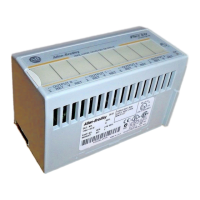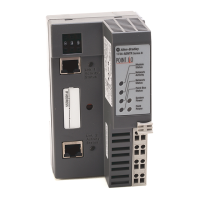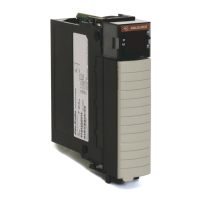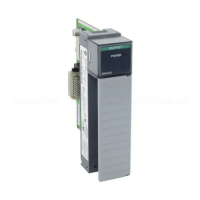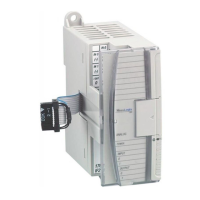Chapter 3
Addressing Modes for Your Remote I/O
3-23
Follow these guidelines when you select 1/2-slot addressing:
Place input modules opposite output modules; place output modules
opposite input modules.
You can use 8, 16 and 32-point I/O modules.
Output modules placed opposite output modules reflect the same bits in
the output image table.
You can use block-transfer modules in a complementary I/O configuration
with 1/2-slot addressing. Use block-transfer modules with these guidelines:
When using double-slot block-transfer modules in the primary
chassis:
- The left-most slot of the two corresponding I/O slots in the
complementary chassis must be empty.
- You can place any single-slot I/O module in the right slot
of the two corresponding I/O slots of the complementary
chassis
When using single-slot block-transfer modules, the corresponding
I/O slot in the complementary chassis must be left empty.
You can have a mix of 1-slot and 2-slot addressing in individual chassis
assigned one I/O rack number (with up to eight I/O groups). For example:
you can select 2-slot addressing for a 1771-A2B I/O chassis and 1-slot
addressing for a 1771-A1B chassis to make up one assigned I/O rack
number (Figure 3.20).
Figure 3.20
Mixing
Addressing Methods in Chassis Assigned One I/O Rack Number
13126
1771A1B I/O Chassis
using 1slot addressing
1771A2B I/O Chassis
using 2slot addressing
One Assigned I/O Rack Number
1 2 3 4-5 6-70
Mixing 1 and 2Slot
Addressing in Individual
Chassis
Allen-Bradley PLCs

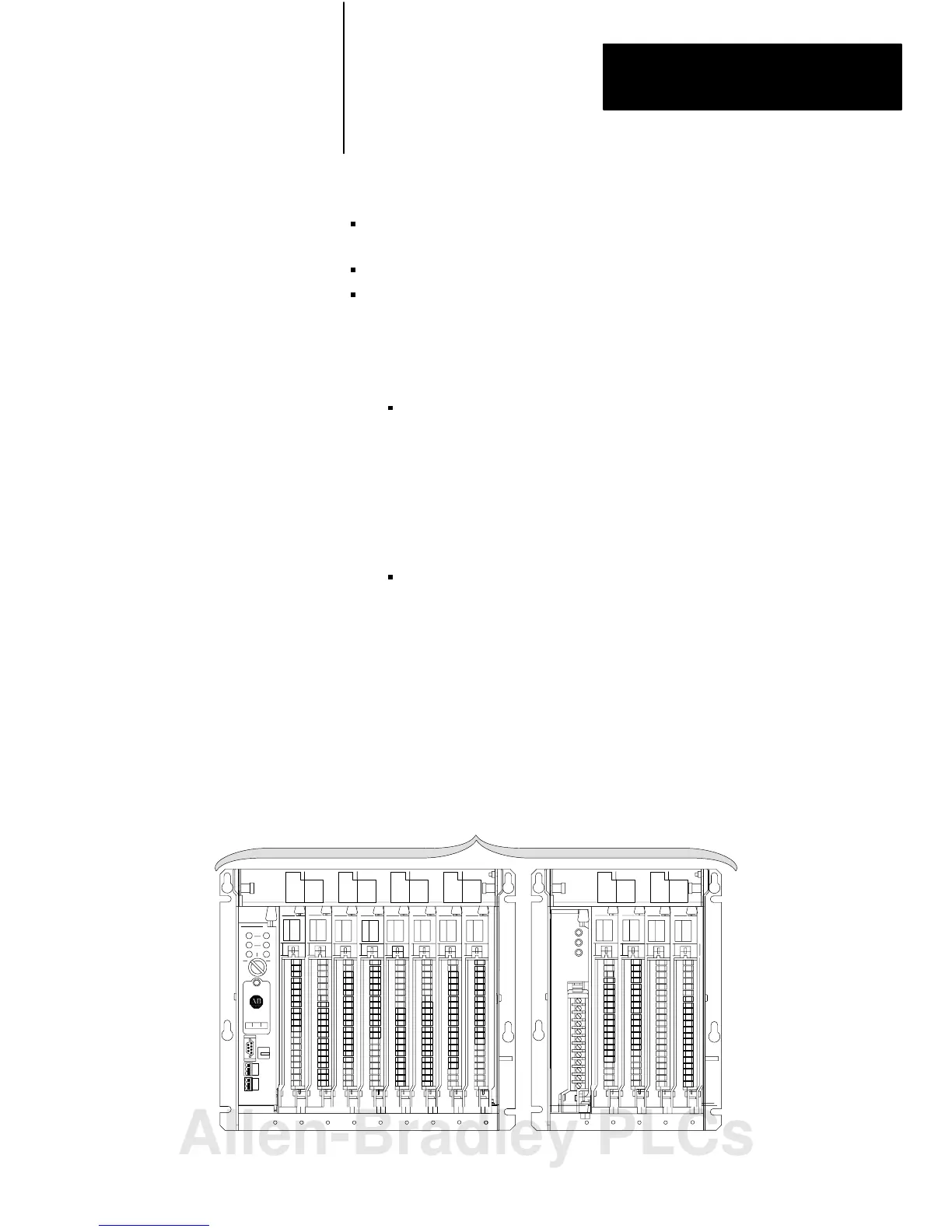